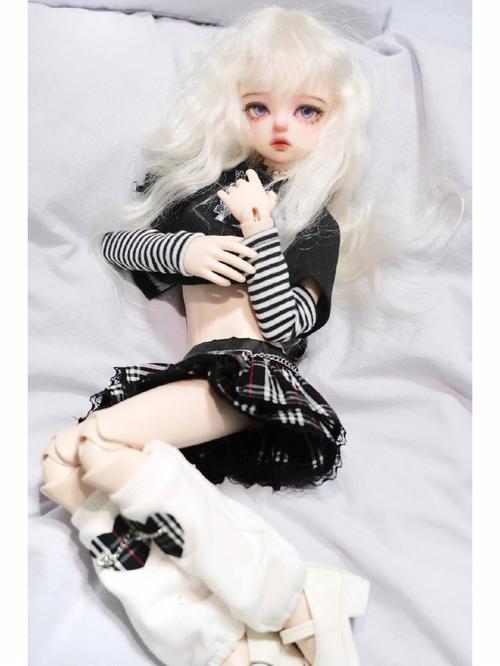Characteristics and Differences Between Petite and Large Sex Dolls
The key differences between petite and large-sized sex dolls manifest across four dimensions: physical attributes, user experience, application scenarios, and cultural preferences. These distinctions reflect both diverse user demands and the deep integration of materials science with market segmentation. Below is a detailed comparative analysis:
一. Physical Attributes: Fundamental Differences in Size, Weight, and Materials
Petite Models: The Ultimate in Lightweight and Portability
Size Range: Typically standing between 120-155cm tall. For instance, a 148cm TPE full-body doll weighs only 37kg, while a 155cm mini model can be compressed to just 5-20kg. This compact design allows easy storage in suitcases or drawers, making them ideal for space-constrained environments like student dorms or shared apartments.
Material Selection: TPE dominates the market at over 80%. It offers soft tactile feel and lower cost but may exhibit oil seepage and staining issues, with a lifespan of approximately 1-2 years. Some premium mini models use Jelly TPE or Platinum TPE to enhance durability while maintaining softness.
Detailed Design: Due to size constraints, facial sculpting may be simplified. However, “proportion amplification” (e.g., enlarged eyes, reduced nose) creates a “cute” aesthetic aligned with anime/manga aesthetics.
Large-Scale Models: The Peak of Realism and Immersion
Size Range: Heights typically exceed 160cm. A 170cm silicone doll can weigh up to 44kg, approaching human proportions. These dolls typically feature metal skeleton support, enabling complex poses (standing, reclining) with 180° joint mobility.
Material Selection: Higher silicone content, medical-grade platinum silicone is odorless, anti-aging, and withstands extreme temperatures from -60°C to 200°C. Some models even support heating chip implantation for body temperature simulation. Their skin texture (e.g., pores, blood vessels) and muscle definition far surpass TPE, with some high-end products achieving over 95% facial realism.
Detailed Design: Emphasis on “realistic imperfections” and customization. Users can opt for hair implants, colored contact lenses, specific skin tones, or even replicate the appearance of celebrities or partners.


二. User Experience: Differentiated Functionality and Scenario Adaptability
Compact Models: Balancing Flexibility and Practicality
Ideal Scenarios:
Travel & Mobility: Folds to fit into a 28-inch suitcase, perfect for frequent business travelers or long-distance relationships.
Private Exploration: Lower price range (¥1,000–5,000) reduces trial costs, suitable for first-time users or collectors.
Roleplay: Quickly transforms into anime characters or professional scenarios by swapping wigs and outfits.
Limitations:
Limited Positions: Insufficient skeletal support restricts complex positions.
Reduced Realism: Shallow canal depth (approx. 17cm) and TPE material prone to sagging with prolonged use.
Large-Scale Models: Immersive and Exclusive Experiences
Advantageous Scenarios:
Emotional Companionship: Highly realistic appearance and texture alleviate loneliness; some users name them, photograph them, or even create social media accounts.
Professional Photography: 1:1 scale suits adult film production or artistic photography; 60% of silicone dolls in Western markets serve commercial purposes.
Long-Term Collecting: Silicone’s durability ensures over 10 years of preservation, with limited editions holding investment value.
Limitations:
Space Requirements: Dedicated wardrobes or display cabinets are needed for storage, and moving requires two people.
Maintenance Costs: Thorough cleaning and powdering to prevent sticking are required after each use. Silicone models also need annual professional maintenance (costing approximately ¥1,000).
三. Cultural Preferences: Deep-Seated Reflections of Aesthetic Differences and Market Positioning
Petite Models: Merging Eastern Aesthetics with Pragmatism
Cultural Roots: East Asian markets favor “neotenic” aesthetics, with dolls around 150cm accounting for over 70% of sales. This preference aligns with anime culture and the ‘lolicon’ subculture, where some users view them as physical manifestations of “2D girlfriends.”
Market Strategy: Manufacturers attract youth demographics through IP collaborations and “blind box mechanics,” with users under 30 comprising 65% of China’s market.
Large-Sized Models: Symbolizing Western Aesthetics and Individuality
Cultural Roots: Western markets prioritize “realism” and “personalization,” with silicone dolls over 170cm accounting for over 50% of sales. This preference aligns with fitness culture and sexual liberation movements, with users tending to choose dolls resembling their real-life partners.
Market Strategy: Manufacturers offer high-customization services. For the premium American brand RealDoll, 40% of clients request replicas of ex-partners or celebrities.
四. Pricing and Market: Cost Structure and Consumer Tier Differentiation
Compact Models: Mass Market Focused on Value for Money
Price Range: TPE mini models typically sell for ¥1,000–5,000, while hybrid models with silicone heads and TPE bodies range from ¥8,000–12,000.
Market Share: Dominates 62% of the global sex doll market, with monthly sales exceeding 100,000 units on Chinese e-commerce platforms.
User Profile: Primarily students, young professionals, and anime enthusiasts, with 70% of users treating them as “entry-level” products.
Large-Scale Models: Niche Market for High-End Customization
Price Range: Full-body silicone dolls start at ¥15,000, while AI-enabled interactive models exceed ¥50,000.
Market Share: Accounts for only 28% of the global sex doll market but contributes over 50% of profits.
User Profile: Primarily high-income individuals, collectors, and adult industry professionals, with 30% owning three or more dolls.
五. Conclusion: Selection Logic and Future Trends
Decision Guide:
For portability and cost-effectiveness with limited living space, prioritize 150cm TPE mini models.
For realism and long-term use with ample budget, invest in 170cm+ full-body silicone models.
For emotional companionship, consider smart models with voice interaction.
Future Trends:
Technology Convergence: AI integration will narrow the experiential gap between models, with the smart doll market projected to exceed ¥230 billion by 2027.
Material Innovation: Bio-based TPE and self-healing silicone developments may address durability limitations in compact models and maintenance complexities in larger ones.
Cultural Diversity: Sales of gender-neutral dolls have achieved a 40% annual growth rate, driven by the rise of non-binary communities.
Whether it’s the graceful charm of petite models or the imposing presence of large ones, these dolls fundamentally represent the intersection of technology and humanity. The choice between types ultimately depends on the user’s balance between “reality” and “fantasy,” as well as their deep understanding of personal needs.



